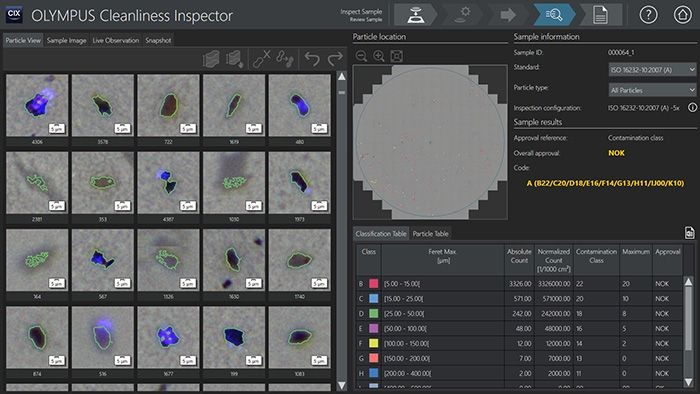Pistons reciprocate inside the cylinders of an internal combustion engine. The outer diameter of the piston is slightly smaller than that of the cylinder liner, enabling it to move up and down with ease.

Piston rings.
Piston rings are fixed around the piston, and engine oil is applied between and the piston rings and cylinder liner to create an effective seal in the combustion chamber. The gap between the cylinder liner inner wall and the piston ring is very small, typically only a few micrometers (μm).
Even microscopic contamination can lead to failure with such a small gap. Metal contamination that remains on the side surface of a piston ring can damage the inner wall of the cylinder liner during manufacturing.
This damage can lead to engine issues, such as improper piston reciprocation and inadequate combustion chamber sealing.
In addition to thoroughly cleaning finished products during quality management, it is critical to use an inspection method that verifies the piston rings have no contamination. Technical cleanliness systems like the Evident CIX100 solution can help inspectors meet the high standards required in manufacturing.
Benefits of Analyzing Piston Rings Using the Evident CIX100 Inspection System
There are multiple benefits to analyzing piston rings using the Evident CIX100 technical cleanliness inspection system:
- Evident UIS2 objective lenses offer decreased aberration fluctuation, providing users with high-quality optics that can capture even the smallest metal contamination.
- Unlike conventional inspection systems that need to perform two scans, the Evident CIX100 system can identify metal and nonmetal particles in a single scan to acquire fast, accurate inspection results.
- As an integrated system, the Evident CIX100 system combines dedicated software and hardware to offer consistent inspection results with high stability and reproducibility.
- The software generates customized inspection reports that comply to industrial standards for contamination inspection. Users can easily retrieve past inspection reports to respond quickly to customer inspection data requests.
Example Inspection Images

Contamination analysis case example.

This information has been sourced, reviewed and adapted from materials provided by Evident Corporation - Industrial Microscopy.
For more information on this source, please visit Evident Corporation - Industrial Microscopy